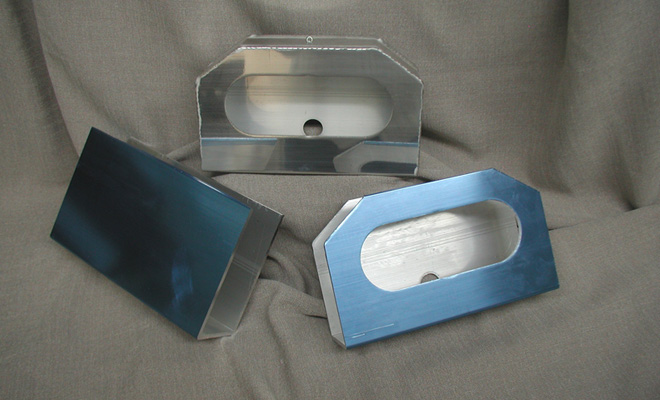A punch press is a machine that is used to cut holes in material. They can span all the way from small machines that hold one die set to very large machines that hold a larger and more complex die set. Punch presses use a powerful ram, not unlike a cookie cutter, to punch out parts.
Die sets consist of (male) punches and (female) dies that are forced together to create a hole in the material being used. Both punches and dies are removable with the punch being attached to the ram and the die to the bed of the machine. The ram forces the punch through the material vertically into the die.
Drive Types:
Flywheel Drive: In these machines, a heavy rotating flywheel drives the ram with the punch. The flywheel uses what is called a Pitman arm to drive the ram.
Mechanical Punch Press: There are basically two kinds of these presses. They are, Full Revolution and Part Revolution presses. Full revolution presses are self-explanatory meaning they take a full revolution of the crankshaft to come to a stop. A clutching system is used for this process. A part revolution press, however, can stop the ram at any part of its rotation. This is achieved by using braking systems that are similar to those used on commercial trucks.
Hydraulic Punch Press: These presses use a hydraulic cylinder to power the ram instead of a a flywheel. This punch system is controlled by valves. Valve controlled systems offer the convenience of a one stroke operation which affords the ram to go up and down when commanded.
CNC Turret Punch Press: CNC presses use computerized controls to automate the positioning of work-piece and the particular tools to be used. Up to 60 tools are located in the turret which can be rotated to bring a specific tool to its proper position.
The bed of a CNC punch press machine is called the X axis with the Y axis being at right angles to the bed. The bed “or table” is moved along the X and Y axis using CNC controller commands. These CNC commands push the ram vertically down through the material into the die. The shape of the material being punched is determined by the design of the punch and die set. The slug is cut out of the work-piece and falls through the die into a container. The ram moves quickly back into position to allow for another punch. This makes the punch press perfect for high volume production capabilities.
Conclusion
Punch presses come in different shapes, sizes, and types. They are perfect for high volume part runs that allows for speed and efficiency. They are a great go-to option for fabrication facilities when standard CNC machines are deemed to be less effective for the job at hand.

